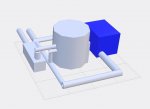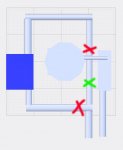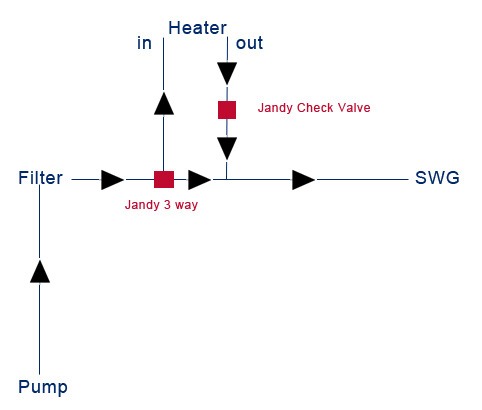Hi all,
I'm hoping the hive mind can help with the placement of bypass valve(s) in a system for a new heat pump.
Here's the tentative design. The heater is the blue box on the renderings, the filter is the cylinder and the pump is the rectangular box. My heat pump's installation guide illustrates only one bypass valve, but I'm wondering if multiple valves should be included to prevent water from backflowing into the heat pump — or is that not really a concern?
If multiple valves are recommended, can someone confirm that three would be required? I considered a two-valve (indicated with red Xs on design) design but this would not return only heated water to the pool — a mix of heated/unheated water would be returned. As I see it, a three-valve design (represented by the addition of green X) would be needed to ensure that only heated water return to the pool (with the two red valves open and the green closed).
Any advice would be appreciated.



I'm hoping the hive mind can help with the placement of bypass valve(s) in a system for a new heat pump.
Here's the tentative design. The heater is the blue box on the renderings, the filter is the cylinder and the pump is the rectangular box. My heat pump's installation guide illustrates only one bypass valve, but I'm wondering if multiple valves should be included to prevent water from backflowing into the heat pump — or is that not really a concern?
If multiple valves are recommended, can someone confirm that three would be required? I considered a two-valve (indicated with red Xs on design) design but this would not return only heated water to the pool — a mix of heated/unheated water would be returned. As I see it, a three-valve design (represented by the addition of green X) would be needed to ensure that only heated water return to the pool (with the two red valves open and the green closed).
Any advice would be appreciated.





